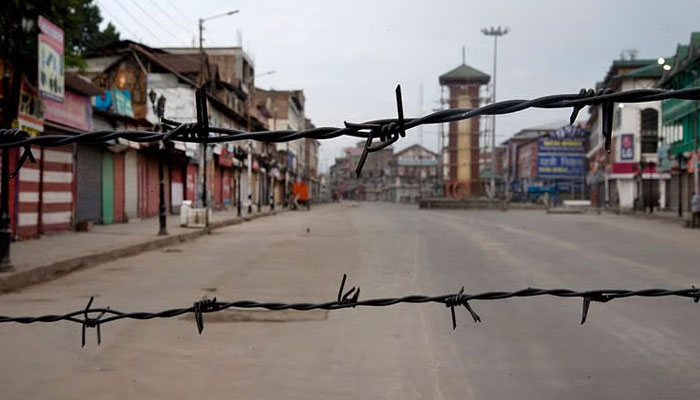For most of the world, history is a chapter to be read, a date to be memorized. For the people of Jammu and Kashmir, 27 October 1947 is not a line in a textbook; it is a scar cut deep into the collective soul. It is a wound that has been kept open for seventy-six years, a day etched in memory as ‘Black Day’—the moment their inalienable right to determine their own future was stolen, and an occupation began that has now outlasted three generations.
The genesis of this unending conflict lies in the turbulent aftermath of the Partition of the Indian subcontinent. As the British Raj dissolved, the 565 princely states were given a choice: accede to the newly formed nations of India or Pakistan, or risk the precarious path of independence. Kashmir, with its overwhelming Muslim-majority population and geographic, cultural, and economic arteries that ran naturally westward to Lahore and Rawalpindi, seemed a logical constituent of Pakistan.
However, its Hindu ruler, Maharaja Hari Singh, hesitated, his autocratic rule already teetering under the weight of a popular revolt. This discontent exploded into the Poonch uprising in late 1947, where Kashmiri militias began to successfully challenge the Maharaja’s authority. Facing imminent collapse, Singh made a fateful decision. On 26 October, he signed the Instrument of Accession to India. The legitimacy of this document remains one of South Asia’s most contentious historical debates. Historians continue to argue whether it was coerced, antedated, or outright forged. What is beyond dispute, and what fuels the Kashmiri grievance, is a single, stark fact: not a single Kashmiri citizen was consulted.
The very next morning, the practical manifestation of that signature arrived in the form of Indian troops landing at Srinagar’s airfield. What the government in New Delhi termed a “temporary defensive measure” to repel tribal militias became, in the Kashmiri experience, the first day of a permanent military occupation. Indian soldiers swiftly secured the airport, then the city, and then began their push into the valley.
The international community was quick to acknowledge the dispute. The matter was rushed to the United Nations, which passed resolutions in 1948 and 1949 affirming Kashmir’s status as disputed territory. These resolutions promised a simple, democratic solution: a free and impartial plebiscite allowing the Kashmiri people to decide their own destiny. That promise, solemnly made to the world, remains unfulfilled, a phantom that haunts the region’s politics.
Over the decades, the “temporary deployment” metastasized into the densest military grid on Earth. Today, estimates suggest there is approximately one soldier for every eight Kashmiri civilians. This occupation is not an abstract concept; it is a daily, visceral reality. Checkpoints and bunkers slice through apple orchards, schoolyards, and ancient graveyards. Curfews are imposed via abrupt text messages. The dreaded pellet guns, ostensibly non-lethal, have blinded hundreds of teenagers. The mountains hold dark secrets in the form of unmarked mass graves. Legislation like the Public Safety Act (PSA) and the Armed Forces Special Powers Act (AFSPA) legally sanction detention without trial and the use of lethal force with impunity, creating an environment where accountability vanishes.
This trauma is not a singular event but a cumulative inheritance. Grandparents who watched Indian Dakota aircraft darken the skies in 1947 now watch their grandchildren face the same models of rifles. Families are fractured, split between those who remained under the shadow of the conflict and those who fled across the Line of Control to Azad Kashmir or into a fraught exile abroad. A generation of children has grown up speaking the word “azadi” (freedom) before they learned to spell it. The psychological toll is catastrophic; a 2022 study by Médecins Sans Frontières found nearly half of all adults in Kashmir suffering from post-traumatic stress disorder (PTSD), a testament to a society living in a state of perpetual siege.
Yet, Black Day is more than a day of mourning. It is a calendar of resistance, a defiant reaffirmation of identity and the denied promise of self-determination. Each year on 27 October, despite a crushing security presence, internet blackouts, and pre-emptive arrests, Kashmiris find ways to speak. They stage rallies in defiance of barricades, wave Pakistani flags from rooftops, and paint slogans on the shutters of their closed shops: “We want plebiscite, not pellets.” The digital realm, when accessible, floods with videos of women creating a cacophony of protest by banging pots and pans, and of students marching through misty university campuses. These acts are not just protest; they are a conscious act of preservation, keeping the memory of the UN resolutions alive and defiantly challenging India’s official narrative that Kashmir is an “integral part” settled through local elections and economic development packages.
In Kashmir, memory itself is weaponized against forgetting. Grandmothers recount the exact thrumming sound of those Dakota aircraft. Fathers remember the first, terrifying crack of a .303 rifle. Teenagers, digital natives of the resistance, stream archived photographs from 1947 on social media with captions that read, “We are still waiting.” Black Day is a living archive, a collective refusal to let the past be fossilized into a benign nostalgia. It is a powerful reminder that occupation is not merely the presence of foreign troops, but the systematic, grinding absence of choice.
The landing did not end in 1947; it continues. It echoes in the rumble of army convoys rolling down the Srinagar-Jammu highway and countless other roads across the Kashmir, Chenab, and Pir Panchal valleys. It is reinforced every dusk when loudspeakers announce new restrictions and the night fills with the anxiety of knock-on-the-door raids.
But so, too, does the resistance continue. It persists in whispered poems shared in hushed tones, in graffiti that magically reappears on walls overnight, and in the stubborn, dangerous planting of flags on deserted bridges. Until the promise of that plebiscite is finally redeemed, 27 October will remain Kashmir’s unfinished sentence—an annual ellipsis that demands the world complete the chapter it began in 1947: to let the Kashmiri people choose their own destiny, in peace and with dignity.
Writer is perusing BS international Relations at International Islamic University and is Intern at Kashmir Institute of International Relations






Comments are closed, but trackbacks and pingbacks are open.